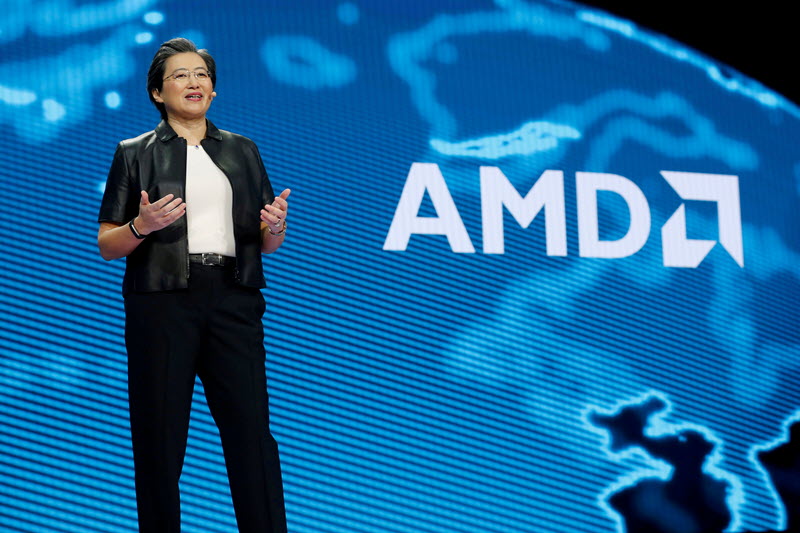Street Calls of the Week
On Thursday, the US semiconductors sector faced significant uncertainty after President Trump’s announcement of new tariff plans on Liberation Day. Leading chip manufacturer AMD, currently valued at $167 billion and showing strong revenue growth of nearly 14% in the last twelve months, exemplifies the industry’s challenges. According to InvestingPro data, AMD’s stock has already declined about 37% over the past six months, reflecting broader market concerns. Bernstein analysts highlighted the potential impact on the industry, noting the mixed reaction to the tariffs, which included a baseline rate of around 10%, followed by substantial reciprocal tariffs on several countries where the US has trade deficits. The US aftermarket reacted negatively, trading down 300-400 basis points.
In 2024, the US imported nearly $3.3 trillion in goods, with machinery, electrical equipment, vehicles, fuel, and pharmaceuticals being the major categories, primarily from the EU, Mexico, China, and Canada. For investors seeking deeper insights into how these trade dynamics affect semiconductor companies, InvestingPro offers comprehensive analysis of over 1,400 US stocks, including detailed trade exposure metrics and expert research reports. Bernstein analysts estimated a blended global tariff rate of around 25%, which could have increased import costs by over $800 billion based on 2024 levels.
Semiconductors, however, have been temporarily spared from the reciprocal tariffs, although they are expected to be affected by the 10% baseline duties. The US imported approximately $82 billion of raw semiconductors in 2024, with Malaysia and Taiwan being the top suppliers. Despite this, the products that incorporate semiconductors, such as computer equipment and smartphones, could see tariff rates nearing 40%, particularly given their significant production in China.
The analysts also pointed out that the US imported around $200 billion in data processing machines and $114 billion in wireless phones in 2024, with a substantial portion of these imports coming from China. Additionally, foreign-made vehicles and parts, which the US imported to the tune of about $350 billion, will likely face a 25% tariff in many cases.
Bernstein analysts concluded that the primary impact on the semiconductor industry would likely be indirect, through demand destruction and supply chain disruption. AMD’s robust gross profit margin of 53% and current ratio of 2.62 suggest strong operational efficiency and financial stability amid these challenges. The full extent of the impact remains uncertain, and further developments from the White House and responses from trade partners are anticipated to shape the industry’s future. For comprehensive analysis of semiconductor stocks and their resilience to market challenges, InvestingPro subscribers can access detailed financial health scores, Fair Value estimates, and over 14 additional ProTips for AMD.
In other recent news, Advanced Micro Devices (NASDAQ:AMD) completed the acquisition of ZT Systems, a provider of AI infrastructure systems, for $4.9 billion. This strategic move aims to enhance AMD’s capabilities in the AI market, with plans to divest ZT Systems’ manufacturing assets while integrating its engineering talent. The acquisition is expected to be accretive to AMD’s financial performance by 2026. Additionally, AMD’s 5th Gen EPYC processors are now powering Oracle (NYSE:ORCL) Cloud Infrastructure, offering improved performance and cost efficiency.
In terms of analyst activity, Stifel maintained a Buy rating on AMD with a price target of $162, highlighting the strategic alignment of the ZT Systems acquisition with AMD’s product roadmap. Conversely, Jefferies downgraded AMD from Buy to Hold, lowering the price target to $120. This downgrade was influenced by a proprietary GPU benchmarking report and concerns over AMD’s competitive position in the AI market, particularly against Nvidia (NASDAQ:NVDA) and Intel (NASDAQ:INTC). Jefferies noted AMD’s limited traction in AI and the potential for increased competition, suggesting more downside risk in the near term.
These developments reflect ongoing efforts by AMD to strengthen its position in high-performance computing and AI sectors, while also facing challenges in maintaining competitive momentum.
This article was generated with the support of AI and reviewed by an editor. For more information see our T&C.
